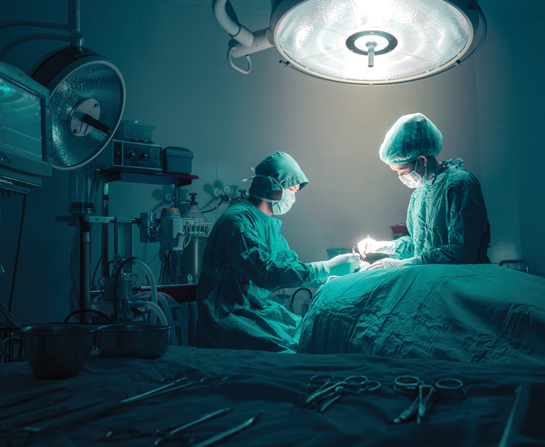Wide Awake
May 2, 2022 Return

“Name the days of the week.”
“Monday, Tuesday, Wednesday, Thursday, Friday, Saturday, Sunday.”
“What do you cut paper with?”
“Scissors.”
“What colour is the sea?”
“Blue. You’ve asked me these questions before, though.”
It is the third time that Jane (name withheld for privacy) has been asked this set of questions but it is for a good reason. She is in the middle of a craniotomy where the surgeon is trying to remove a tumour located dangerously close to an area of her brain which is responsible for speech and language comprehension. Now you may be wondering, ‘Why does she have to answer these mundane questions?’ and ‘Why is she awake during surgery in the first place?!’
As strange as all this may seem, awake surgery (in this case, awake craniotomy) is necessary for Jane’s surgeon to pinpoint where the tumour ends and how close he can cut without affecting her ability to speak. Once he figures out exactly how far he can go, her dose of anaesthesia is upped again. Moments later, she is back asleep as he and his surgical team works to remove the tumour.
Fortunately for Jane, the growth turns out to be benign and several days later, she is fit for discharge. Of her experience, she says, “It’s as if nothing ever happened. I’m doing well.”
Growing popularity
While awake surgery can be a foreign and rather shocking concept to some, it has been around for a long time according to Consultant Neurosurgeon Dr Syed Abdullah Al-Haddad. It was first used in the treatment of epilepsy decades ago. Epilepsy patients would be kept awake during surgery so they could help surgeons determine which brain tissues were causing the seizures. However, it was only later, with the introduction of brain-mapping technology (which enables doctors to digitally create an accurate replica of their patient’s brain) that neurosurgeons began tinkering with the idea of awake craniotomy. Since then, there has been growing interest in this kind of brain surgery both internationally and locally.
How awake is ‘awake’?
“Although it is called ‘awake craniotonomy’, patients can rest assured that they will not be awake throughout the entire operation. What happens is that the patient will be sedated, awakened, and later sedated again,” Dr Syed Abdullah clarifies.
“After the patient’s skull has been opened, he or she will be awakened for assessment. Basically, assessment involves them being asked to carry out tasks which are associated with motor, speech or sensory control (eg, moving a certain limb or answering simple questions) as the tumour is being removed. After that’s completed, he or she is sedated once again so that the surgeon can seal the skull.”
Is it for everyone?
While there is growing interest among medical professionals in this subject matter, do patients share the same enthusiasm? Dr Syed Abdullah says, “Most of my patients, especially the younger ones are happy to go ahead with awake craniotomy once they are aware of how it can improve their condition while significantly minimizing the risk of complications. Of course, that’s not the case with everyone. If I strongly feel a patient is unsuitable for this kind of surgery, I don’t bring it up because I don’t want to give them unnecessary anxiety.”
Elaborating further, he says, “People who are unfit for awake craniotomy include babies, the elderly and those with airway or weight issues. This is because patients need to be capable of communicating with the surgeon and following instructions efficiently as the operation is ongoing. They must be fully co-operative.”
To wake or not to wake?
Comparing awake craniotomy with its conventional counterpart, Dr Syed Abdullah says, “Awake craniotomy is definitely better. In fact, when it comes to certain patients, we are almost 100% confident that they won’t experience any untoward complications with awake craniotomy. And since complications are much fewer, some patients don’t even need to undergo rehab post-surgery!”
He continues, “Despite of awake craniotomy’s advantages over conventional craniotomy, some people may still have doubts. For instance, they may wonder if the hospitals in Malaysia are well-equipped enough for surgeries such as this. Rest assured, we have the necessary medical facilities and equipment. I used to practise in the UK and I feel the equipment here is on par with those in the UK. So, patients needn’t worry.”
References:
The Sun Daily. Available at www.thesundaily.my
Time. Available at www.time.com
UCLA Health. Available at www.neurosurgery.ucla.edu
If you like this article, do subscribe here.
